
Most of us are probably familiar with the history of the first wave of Punjabi migration to California in the late 1800s and early 1900s.  These pioneers, many Sikhs, set up the country’s first gurdwara in Stockton, formed the Ghadhar Party to overthrow the British Raj, and many ended up marrying Mexican women. I learned about this fascinating history way later than I should have, but have noticed more and more consciousness of these early migrants and their descendants over the last several years.
These pioneers, many Sikhs, set up the country’s first gurdwara in Stockton, formed the Ghadhar Party to overthrow the British Raj, and many ended up marrying Mexican women. I learned about this fascinating history way later than I should have, but have noticed more and more consciousness of these early migrants and their descendants over the last several years.
A book that just came out unearths a lessor known history of early South Asian migration to the United States. A few decades after this Punjabi migration to California came a smaller, but no less interesting wave of South Asian immigration (Bengalis) to the east coast.  This little-known history is documented in a new book by Vivek Bald called Bengali Harlem and the Lost Histories of South Asian America. Like their Punjabi predecessors in California, these mostly Muslim migrants were working class, dealt with a great deal of racism, and married women from other communities of color and immigrant communities.
Bald, also a filmmaker (who made an amazing film about the British Asian underground music movement of the 1990s called Mutiny: Asians Storm British Music), is also working on a documentary version of the book entitled In Search of Bengali Harlem, which you can preview here.
I haven’t yet read the book but am really looking forward to checking it out. As you’ll see from the blurb below, these stories have much in common with those of the early Punjabi migrants, even if they were working in different industries and came from different parts of South Asia.
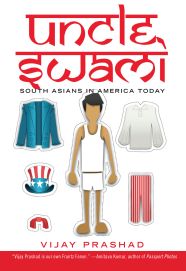
Co-blogged by Jodha and Mewa.
See introduction here.
In order to give some format to this, I’ll attempt to summarize major points of each chapter and then conclude the post with a bit of my own thoughts, analysis, questions, and/or comments. Looking forward to your comments and thoughts! We’ll see how it goes for this first time and can revisit the format, if need be.
Chapter 1 – Letter to Uncle Swami
Professor Vijay Prasad opens his Uncle Swami with a provoking letter to the Uncle. Uncle Swami may be the same as Uncle Sam or there may be some differences too. Prasad takes stock of the past 10 years since the “planes crashed into your buildings.”
Written in an anti-imperialist vein, he writes “planes crash; people are smashed.” The effects of that fateful September day were not limited to New York or Washington, to those nearly 3,000 people that died, or even their families. No, Prasad writes “your feet stomped on your own ground, crushing Balbir Singh Sodhi and Gurcharanjeet Singh Anand, Imran Tahir and Ahmed Abualeinen.” Nor were these feet only stomping on “your own ground” – they stomped “far-off Kabul and Kandahar, Mazar-e-Sharif, and Herat, later Baghdad and Basra.”
But that “obedient servant” knows that Uncle Swami isn’t just stomping feet and whipping tails, he acknowledges “You have been good to me. You have been good to many of us.” Still he suffers – “I have heartburn, Uncle. I will take to drink. I will take to drugs. I will take to watching TV, eating fast food, going into debt.”
Contradictions and all – this is Uncle Swami.
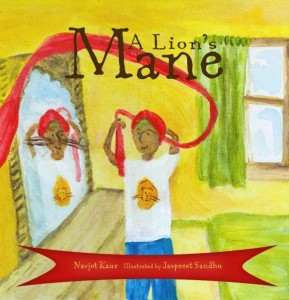 On our weekly library trips, I find myself going through shelf after shelf of children’s books trying to find something both entertaining and challenging for my young and enthusiastic readers. Often times, the books we find are one-dimensional; either instructive, or funny, or downright silly. Rarely do I come across a book that strikes a balance of being both educational and inspiring…this is what I found in A Lion’s Mane by Navjot Kaur
On our weekly library trips, I find myself going through shelf after shelf of children’s books trying to find something both entertaining and challenging for my young and enthusiastic readers. Often times, the books we find are one-dimensional; either instructive, or funny, or downright silly. Rarely do I come across a book that strikes a balance of being both educational and inspiring…this is what I found in A Lion’s Mane by Navjot Kaur
A Lion’s Mane is about the journey of a young Sikh boy who while discovering why he has his long mane (kesh), also learns about the principles of his faith. Concepts like patience, generosity, wisdom, and courage are all woven in to his beautiful red dastaar that guide you through the story.
In addition to the captivating illustrations, it is the simple messages that are reinforced throughout the story that I found particularly meaningful and easy for children to process. Statements like,
“When we learn something new, it makes each of us stronger”
“Being a Khalsa knight gives me the courage to stand up to bullies”
Although I have read several children’s books that touch on the Sikh experience, what I appreciate most about A Lion’s Mane, is how Sikh religious and cultural principles are raised in the context of other cultures and communities with similar principles. I had no idea of the symbolic role the lion played in Native American Hopi culture. In explaining who we are to non-Sikh communities, I think it is just as important to share how our traditions are similar as it is to show how we are different. This pushed me to learn a bit more about some of the other people and cultures mentioned. I found the glossary most useful in explaining to my children who is Wangari Mathai and what the Anishinaabe tribe is.
Sorry for not posting last week…so here we go with the summary of the final part of the book. Next week will be the grand-finale as we try to pull all these pieces together and view the book in a comparative Sikh diasporic framework.
————————————————————————————-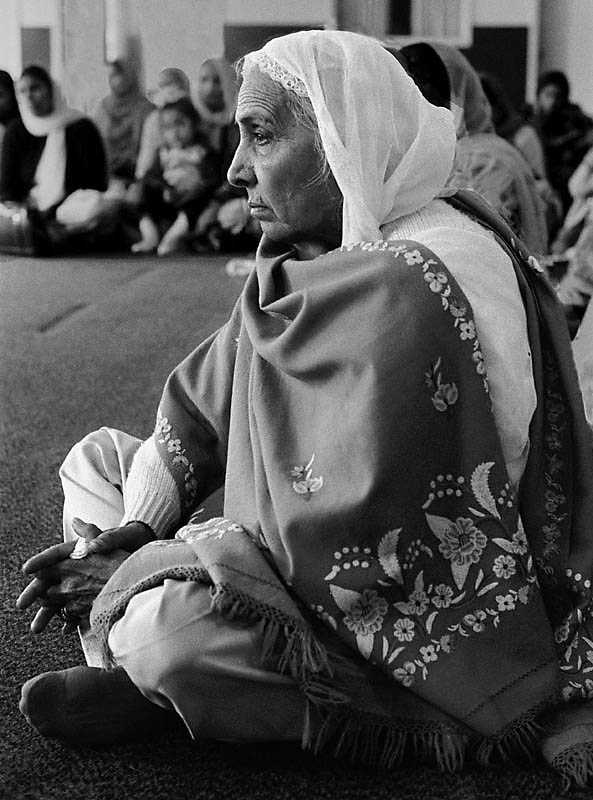
Coblogged by: Jodha and Mewa Singh
Chapter 9 deals with “Punjabi, Bhangra, and Youth Identities” and the final chapter is the conclusion.
Chapter 9 opens with a discussion on the propagation of the Punjabi language in Britain. Since at least the 1960s members of the community have been worried about the decline in Punjabi language competency and in 1965 established the first Gurdwara-run “Punjabi school” in Smethwick.
During the 1960s-80s a series of laws were passed that sought to encourage support for minority languages. This resulted in the institutionalization of Punjabi at the GCSE and A levels. Despite these moves by the state and by the community (Punjabi broadcasting, newspapers, television stations), the general outlook of Punjabi’s future seems rather gloomy.
Last week we actually had a conversation about the book (thanks RT!) and hopefully this week will continue the dialogue. Sorry for the delay in getting this up, airline delays are tough. Here we continue….
———————————————————–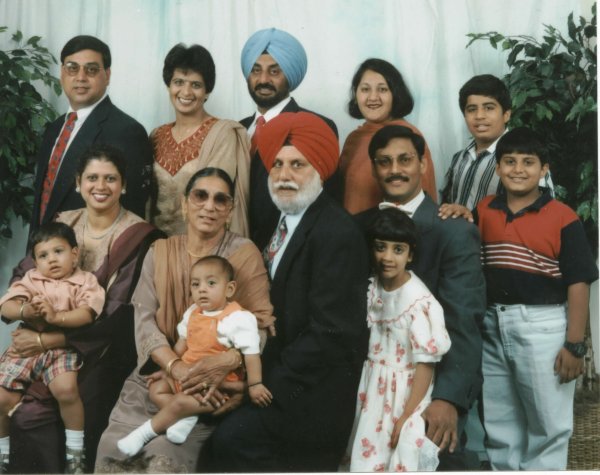
The chapters of this section probably also warrant separate blog posts as we tackle the subjects of Chapter 7 (“Employment and Education” and Chapter 8 (“Family, Gender and Sexuality”). Still time and space constricts us.
Chapter 7 looks at the employment and education profile of the Sikhs in greater detail than previously mentioned in Chapter 3. The authors note that the followers of Guru Nanak have done well in the UK, but by no means are they ‘ethnic high flyers’ (145).
Entering the UK job market as door-to-door tradesmen (Sikh Bhatras of the 1930s/40s) and followed by post WWII unskilled manual labourers, Sikh enclaves formed where employment opportunities were available. First jobs for newly arrived immigrants were facilitated by previously settled kith and kin.
Labour exploitation at the hands of factory managers and even intermediaries from their own community (batoos) helped to propel the labour movements led by the IWAs.
Coblogged by: Jodha and Mewa Singh
Well it doesn’t seem by the number of comments (0) that this first attempt at a book club garnered much interest, although by the number of hits, it has been extremely popular. Regardless, for us it has been a 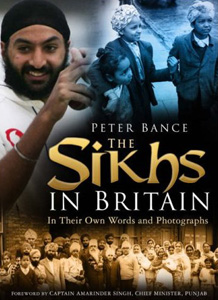 great excuse to read a great book….So we’ll continue. PS: the side picture is related to a soon-to-be-available coffee table photography book.
great excuse to read a great book….So we’ll continue. PS: the side picture is related to a soon-to-be-available coffee table photography book.
———————————————–
The two chapters read this week probably deserve separate blog posts, but still in the interest of time and space, we are going to keep them together.
Chapter 5 deals with “Homeland Politics: Class, Identity, and Party” and Chapter 6 is about “British Multiculturalism and Sikhs.”
The authors begin chapter 5 by noting that:
Associations of immigrants in Britain have generally served two functions: to facilitate the integration of the new arrivals and as conduits of homeland politics, and these functions have further strengthened with the onset of globalization, which has underpinned the rise of nationalism and diaspora movements. (94)
1984 is seen as the ‘critical’ event that intensified Sikh religio-ethnic self-identification with large numbers of Sikhs. The mammoth protest at Hyde Park on June 10, 1984 may still be vividly inscripted upon the memories of many Sikh-Britishers.
Still the associations and groups that were created to manifest this new religio-ethnic self-identification and homeland politics were along the lines of traditional associations. While there was something new in what came out of the community after 1984, there are continuities as well.
Tracing the evolution of various causes within the Sikh community, the authors note moves from the politics of class (IWAs [Indian Workers Association] up to the early 1980s), to the politics of identity (Khalistan 1984-1997), to emphasis on political organization (Sikh Political Party, UK) (94).
Coblogged by: Jodha and Mewa Singh
After a suggestion from a fellow langa-(w)riter (thanks Reema!), we are trying a more thematic approach this week instead of summation. Let’s see how it goes: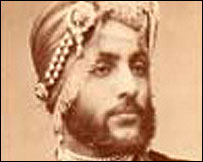
——————————————————-
Chapter 3 and 4 this week had two very different topics. The third chapter begins by looking at the movements and changes in settlement, demography, and social profiles of the Sikh-British, while the fourth chapter concentrates on institution-building within the community at its chief site, the Gurdwara.
Issues of Settlement:
The story of Sikh settlement in Britain begins with Duleep Singh, the son of Sardar Ranjit Singh. After the defeat of the Sarkar-e Khalsa by the forces of the East India Company, Duleep Singh was separated from his mother, forced to renounce all claims and much state property, and later converted to Christianity, only to later reconvert to his ancestral faith towards the end of his life. While Duleep Singh’s story is an epic in and of itself symbolic of Sikh-Anglo relations, his migration to Britain was only to be the beggining of the Sikh presence.
Coblogged: Jodha and Mewa Singh
First off, our sincere apologies. Due to unforeseen circumstances, this could not be published on Monday. The rest of the days will go along much better. Also, bear with us as we will get better as we go along. So Ji Aayan Nu and welcome to TLH’s 1st Book Club
—————————————————————————-
The first chapter begins with a cursory summary of Sikh history. As the authors note (and in this section you can hear Gurharpal Singh’s voice a little more prominently), much of this chapter was published in his earlier Ethnic Conflict in India.
Beginning with the Guru period, the authors note that migration is hardly a new phenomenon for the Sikhs, nor can it be said to merely be a colonial phenomenon. Selectively touching upon aspects of Sikh history, the authors draw heavily from McCleod and Grewal as the more definitive accounts. However some of the debates in the field are noted as contrary to McCleod’s position of Guru Nanak lying within a ‘Sant tradition familiar to north India’, Sikhs regard the founder of their faith as one that created a ‘new religion for a new age’ (12).
UPDATE: Both authors – Dr. Tatla and Dr. Gurharpal Singh – said that they will participate in some capacity in our first book club. A number of well-known bloggers from some prominent websites have expressed interest as well. ORDER YOUR BOOK NOW! Only 1 week before we begin!
————————————————————
Coblogged: Jodha and Mewa Singh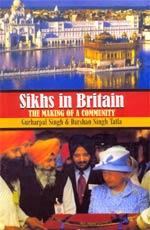
What we are about to suggest, to our knowledge has never been done before.
We are initiating the first TLH web-wide Sikh Book Club. At this point we are not sure of the frequency as we will gauge the interest from this first attempt.
What are we suggesting?
For the first book of our book club, we are suggesting a simultaneous reading of Gurharpal Singh and Darshan Singh Tatla’s Sikhs in Britain: The Making of a Community.
The two of us – Jodha and Mewa Singh – will facilitate the discussion (unless we can find someone better!). We plan to invite the authors as well as some prominent Sikh activists in our community. We hope Sikhs from all across the globe (especially UK Sikhs) will participate. Please feel free to invite others as well!
The Book:
Over the years we have read numerous academic books on the Sikhs and their history and the works of Gurharpal Singh and Darshan Singh Tatla have always been amongst our favorites. Thus, it was with great excitement that we see these two professors collaborating together. Both have an intimate knowledge of the Sikh community in England and we can think of few others that would be more able to write such a tome. This book, although focused on our brethren and sistren(?) in the UK, will provide us an avenue to delve into that section of our community, but we hope to broaden the conversation to understand other sections of our Sikh diaspora.
